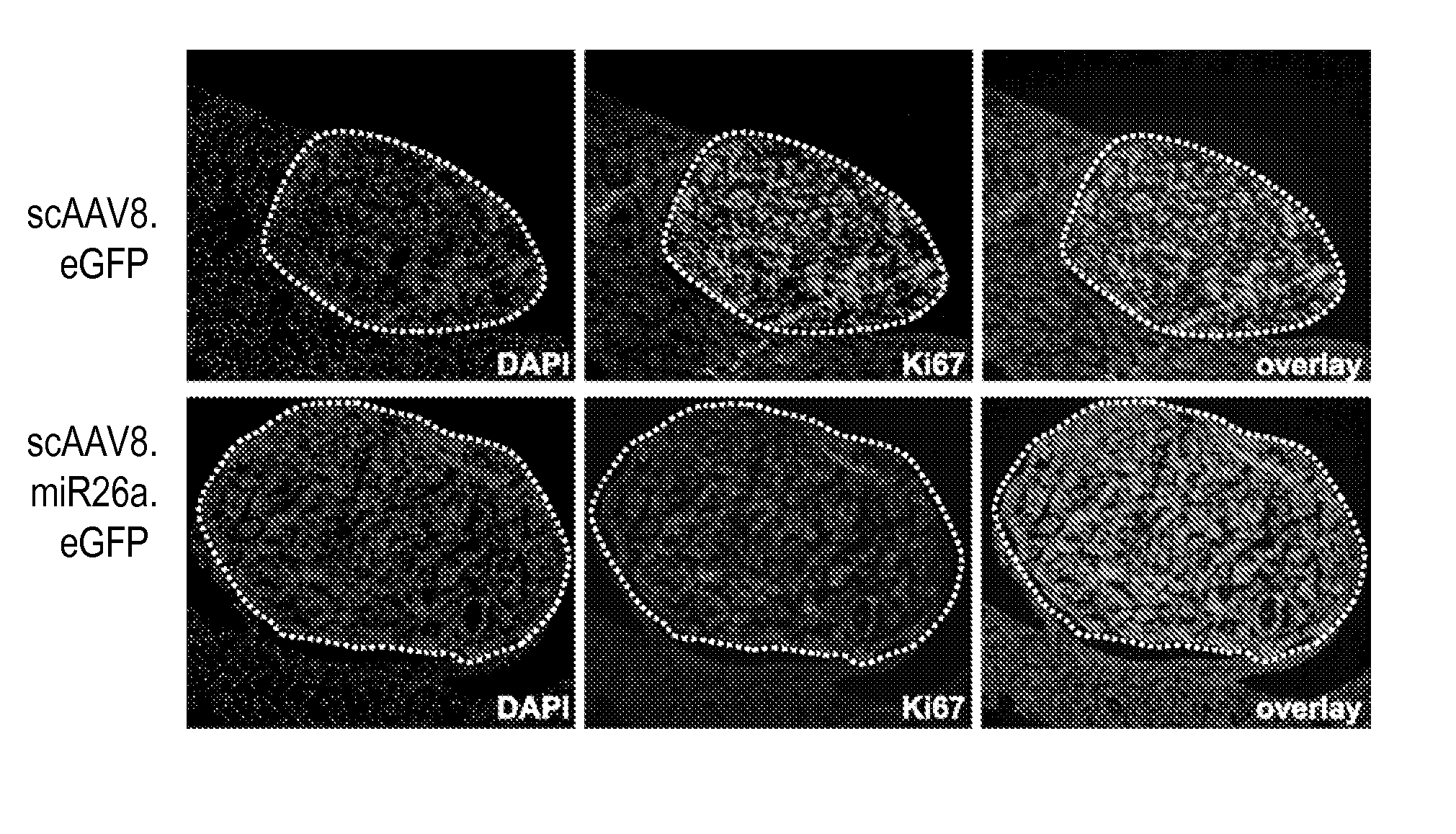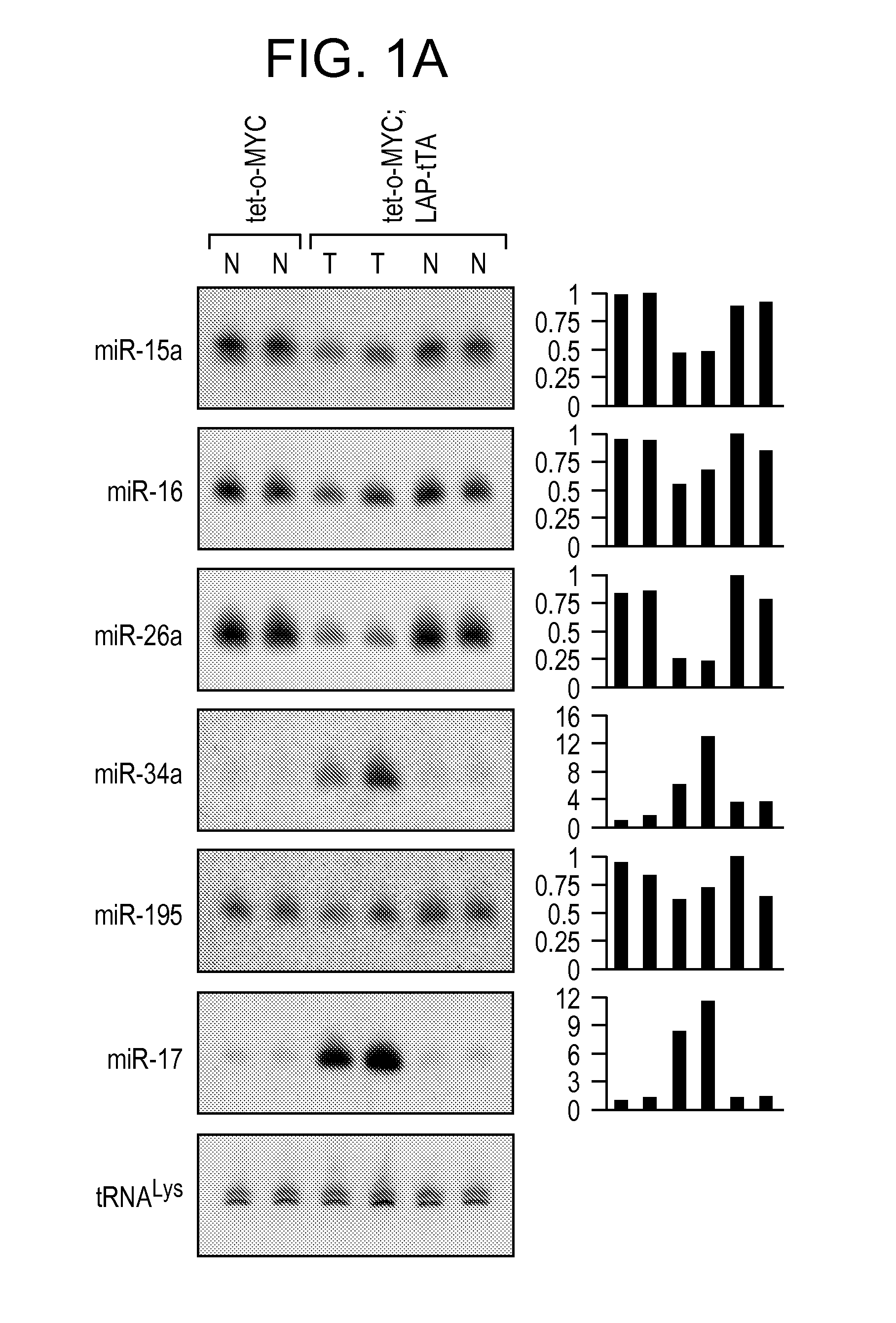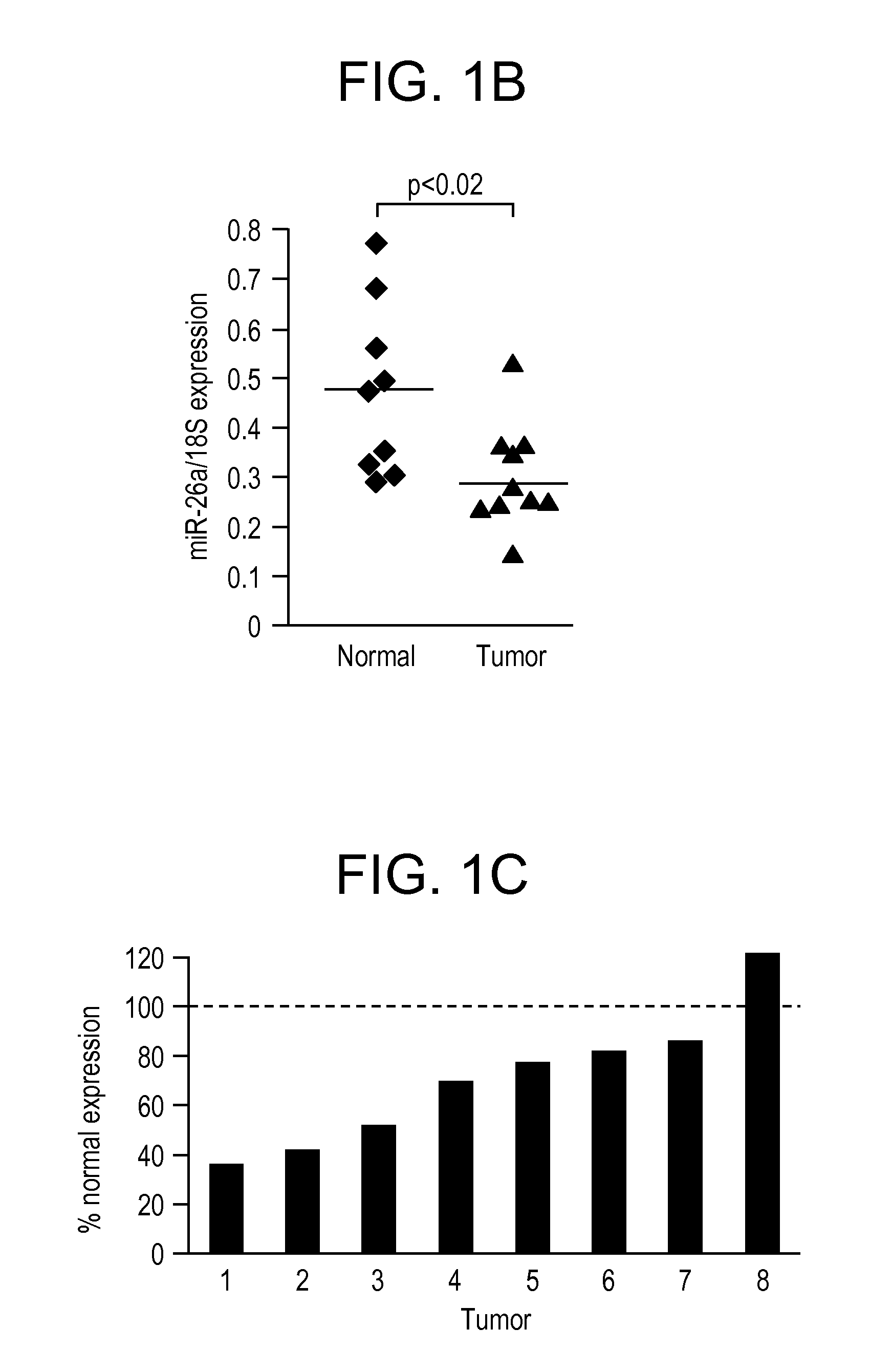Compositions and methods for treating hepatic neoplasia
a technology for hepatic neoplasia and compositions, applied in the direction of drug compositions, tumor/cancer cells, genetic material ingredients, etc., can solve the problems of reducing the efficacy of current treatment regimens for this cancer type, and achieve the effects of reducing the probability of developing a disorder, facilitating production, and delaying ons
- Summary
- Abstract
- Description
- Claims
- Application Information
AI Technical Summary
Benefits of technology
Problems solved by technology
Method used
Image
Examples
example 1
Materials and Methods
Cell Culture
[0177]HEK293, HEK293T, and HeLa cells were cultured in high glucose (4.5 g / L) DMEM supplemented with 10% fetal bovine serum (FBS), penicillin, and streptomycin. HepG2 cells were cultured in EMEM supplemented with 10% FBS, penicillin, and streptomycin.
RNA Isolation and Northern Blotting
[0178]Total RNA was isolated from cultured cells or tissue using Trizol (Invitrogen) according to the manufacturer's protocol. Northern blotting was performed as previously described (Hwang et al., 2007) using Ultrahyb-oligo buffer (Ambion) and oligonucleotide probes perfectly complementary to the mature miRNA sequences. All membranes were stripped and re-probed for tRNALys as a loading control.
Plasmid Construction
[0179]MSCV.PIG retroviral vectors expressing miR-18a, miR-26a, and miR-34a were previously described (Chang et al., 2008). For luciferase reporter constructs, the predicted miR-26a binding site and approximately 225 bp of flanking 3′ UTR sequence was amplified...
example 2
Downregulation of Putative Anti-Tumorigenic miRNAs in Myc-Induced Liver Tumors
[0200]We previously demonstrated that Myc activation in B cell lymphoma models results in downregulation of a large cohort of miRNAs including miR-15a / 16, miR-26a, miR-34a, miR-150, and miR-195 (Chang et al., 2008). Enforced expression of these specific miRNAs dramatically inhibits B cell lymphomagenesis. In order to extend these findings to a solid tumor model and to investigate the potential use of these miRNAs as anti-cancer therapeutics, we studied their expression in a previously described model of liver cancer in which mice harboring a tetracycline (tet)-repressible MYC transgene (tet-o-MYC) are crossed with mice expressing the tet-transactivator protein (tTA) driven by the liver activator promoter (LAP) (Beer et al., 2004; Felsher and Bishop, 1999; Shachaf et al., 2004). Upon removal of doxycycline (dox), bi-transgenic animals express MYC specifically in the liver and subsequently develop liver tumo...
example 3
miR-26a Expression Induces a G1 Arrest in Human Hepatocellular Carcinoma Cells
[0202]As an initial test of the anti-proliferative properties of miR-26a in liver cancer cells, we utilized a murine stem cell virus (MSCV)-derived retroviral construct to enforce expression of this miRNA in the human HCC cell line HepG2. As controls for this experiment, we used viruses that express miR-18a, a component of the pro-tumorigenic miR-17-92 cluster, and miR-34a, which is known to have potent anti-proliferative and pro-apoptotic activity in other cell lines (Bommer et al., 2007; Chang et al., 2007; He et al., 2007a; Raver-Shapira et al., 2007; Tarasov et al., 2007). Northern blotting demonstrated that miR-26a expression levels in HepG2 cells closely minor expression levels in tumors from tet-o-MYC; LAP-tTA animals (FIG. 2A). Infection with MSCV-miR-26a results in enforced expression of this miRNA at a level comparable to that observed in normal liver tissue. Flow cytometric analysis of retrovira...
PUM
| Property | Measurement | Unit |
|---|---|---|
| molecular weight | aaaaa | aaaaa |
| molecular weight | aaaaa | aaaaa |
| molecular weight | aaaaa | aaaaa |
Abstract
Description
Claims
Application Information
 Login to View More
Login to View More - R&D
- Intellectual Property
- Life Sciences
- Materials
- Tech Scout
- Unparalleled Data Quality
- Higher Quality Content
- 60% Fewer Hallucinations
Browse by: Latest US Patents, China's latest patents, Technical Efficacy Thesaurus, Application Domain, Technology Topic, Popular Technical Reports.
© 2025 PatSnap. All rights reserved.Legal|Privacy policy|Modern Slavery Act Transparency Statement|Sitemap|About US| Contact US: help@patsnap.com



